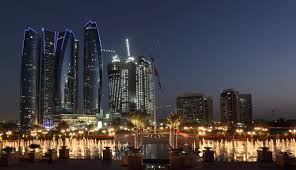Seeing as Much of Abu Dhabi as You Can
September 17, 2015 by admin · Leave a Comment
By Monte Carlo Rent A Car, LLC
No matter where you plan to go on your next vacation, you need to be sure you take enough time to plan ahead and really see everything this new spot has to offer. Even if you’ve been there before, part of ensuring you get to take in as much as possible involves doing just a bit of planning ahead.
 However, if you’re going to somewhere like Abu Dhabi, this is all the more important. You absolutely must understand the layout of the land and where to go for all your adventures. This probably goes without saying though. Nowadays, you can even hire people who will help you plan your trip, leveraging their impressive knowledge of the place.
However, if you’re going to somewhere like Abu Dhabi, this is all the more important. You absolutely must understand the layout of the land and where to go for all your adventures. This probably goes without saying though. Nowadays, you can even hire people who will help you plan your trip, leveraging their impressive knowledge of the place.
Even then, though, you’ll want to get a car lease in Abu Dhabi to make sure you can get from point A to point B whenever you want. How else will you be able to leave feeling satisfied you did everything you wanted to and then some?
Fortunately, with a cheap car rental in Abu Dhabi, nothing the land has to offer need ever be out of reach. You can also go there whenever you want without having to wait on someone else’s timetable.
____________________________________________________________
For a car hire in Abu Dhabi you should really only trust Monte Carlo Rent a Car, LLC. You’ll get an amazing car at a great price and won’t have any trouble seeing everything that Abu Dhabi has to offer.
Harlem: From the Great Depression to the Modern Era
September 2, 2015 by admin · Leave a Comment
As the world was plunged into its first major war, black Americans were finding new opportunity in Northern cities like Harlem. Harlem was one of many destinations that held the promise of steady work and economic prosperity. Until the end of World War I, when white Americans began to return stateside, Harlem became a haven for the African-American experience.
It was the birth place of the Harlem Renaissence, an artistic movement that centered on black culture, and the city became a representation of that culture. So much so that other places like Georgia and Alabama, which had historical ties to the black movement, felt somewhat threatened by this sudden migration.
By 1920, more than 30% of the city of Harlem was black, and that number had risen by forty within ten years. At the time of the Great Depression, nearly 70% of the city’s population was black.
Black businesses fell into decline as other ethnic groups came into the picture. After World War II, those tensions rose in sync with the rents. During the late 50s and early 60s, New York became embroiled in rent strikes and safety concerns. Rat-infested tenemants and apartments proved inadequate as shelter, which led to the city’s largest public works project: housing for the poor.
The city had intended to manage blocks of affordable housing, but community protests halted development about halfway through. The education system fell into decline as well. For a long time, Harlem seemed like the city that couldn’t, until Harlem finally began seeing real growth in the 1990s. Today’s Harlem has a growing white population and renovated shops, perhaps signs of the gentrification that is to come.
Phineas Upham is an investor from NYC and SF. You may contact Phin on his Phineas Upham website or Facebook page.
